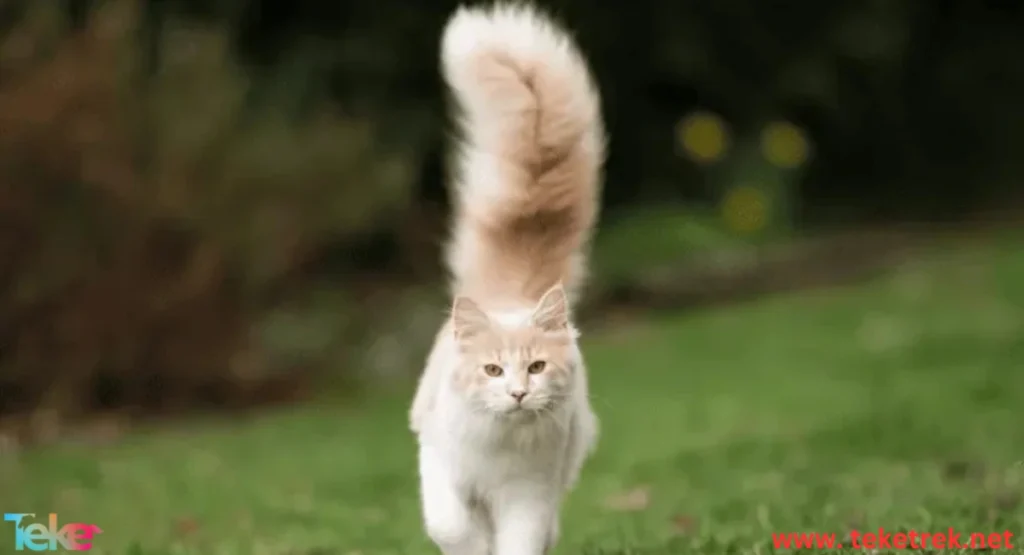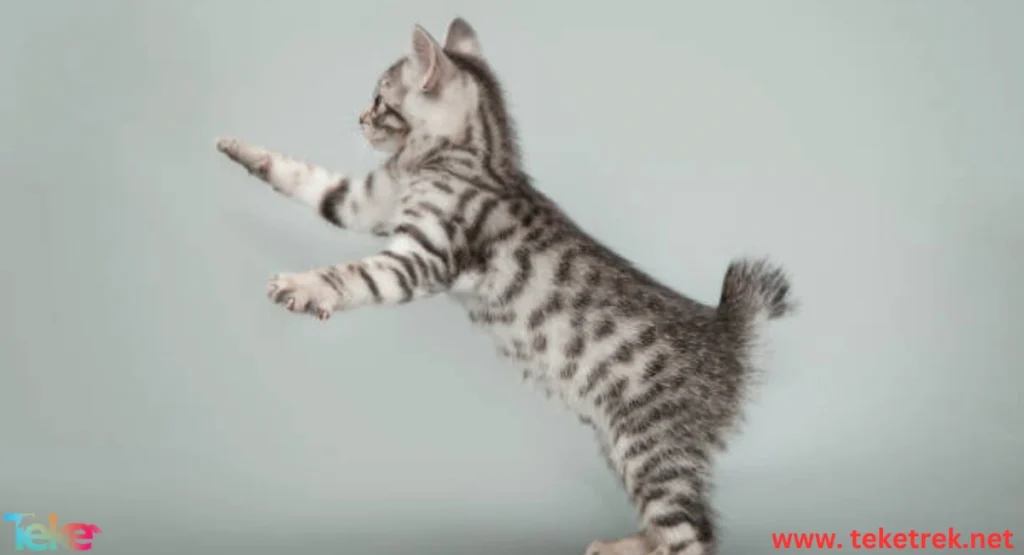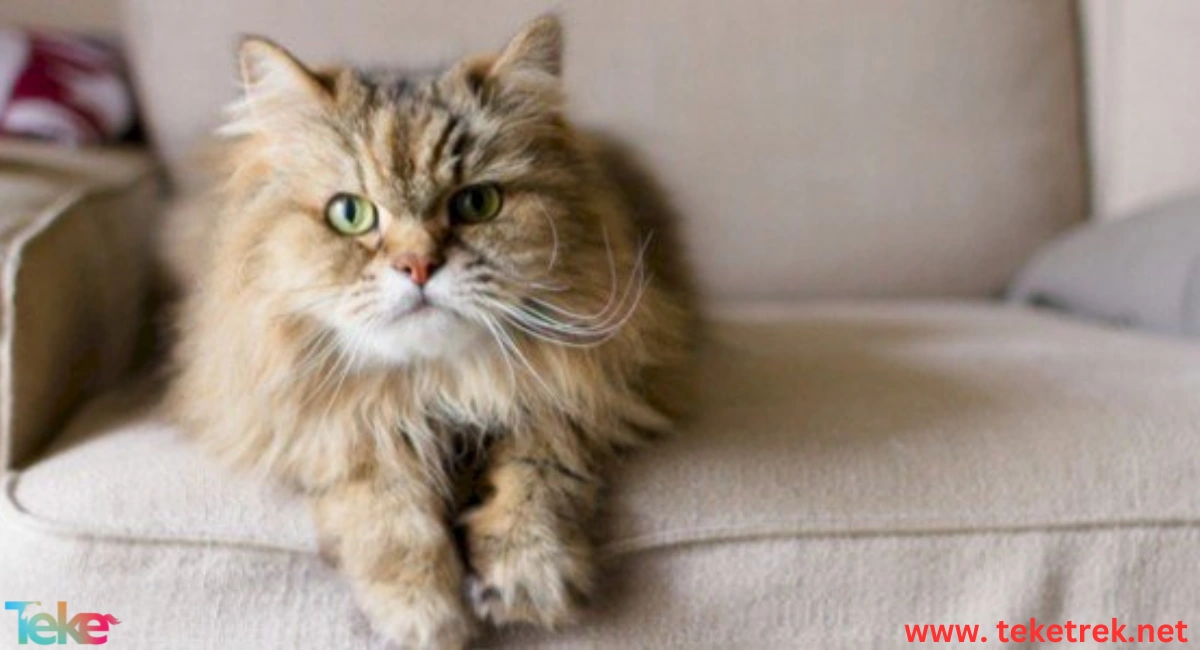Cats’ body language is considered one of the most effective means of communication. It is a non-verbal method that relies on certain movements, body expressions, and sounds. It can be a mysterious and sometimes incomprehensible language. If you are trying to understand your cat’s body language, these movements and expressions, and to know what the cat is trying to say or feel, studies have proven that pets have certain movements and sounds to interact with each other and with humans. Cats are among the most important pets kept in homes among humans. Therefore, it is important to learn about the most important movements, body language, and sounds cats make, as opposed to verbal language to express something. Body language is one of the most important languages for animals to express themselves، Here are the details in this article from teketrek.
Understanding Your Cat’s Body Language Through Tail Movements
Cats express themselves through various movements, such as tail movements, to express their feelings and moods. These movements include shaking, raising their heads, and crouching. Each movement has a meaning and significance, as follows:
- Tail Wagging: The tail wagging expresses excitement and happiness. This movement occurs when the cat approaches its owner to welcome them. Tail Raise: A raised tail position expresses happiness, confidence, and a sense of security and comfort.
- Tail Curve: Curving expresses fear and tension, indicating a cat’s sense of danger and discomfort.

Understanding Cat Emotions Through Ear and Eye Positions
The language of the eyes and ears of cats is one of the most prominent ways cats communicate. These positions express emotional states and feelings, and these feelings indicate the following:
Eye Positions
- Wide, open eyes: Express interest, alertness, and attention.
- Narrow eyes: Express comfort, confidence, and security.
- Staring eyes: Express concentration on everything around them and careful examination of the area.
- Shining eyes: Cats’ eyes shine when they are feeling playful and excited.
- Lowered eyes: Express fear, panic, and discomfort.
- Slow wink: This wink indicates affection and confidence.
Ear Positions
- Ears straight forward: Express interest, care, and listening.
- Ears straight back: Indicate anger, aggression, and panic.
- A single, upright ear: expresses focus, attention, and curiosity.
- Rapidly moving ears: indicate tension, excitement, and eagerness.
- Dropped ears: express fear, weakness, and submission.
- A wobbly ear: indicates happiness, joy, and a sense of comfort.
How to Set Up an Ornamental Fish Tank | Step-by-Step Guide for Beginners
Other Behaviors: The Difference Between Scratching, Licking, and Meowing
Cats perform certain intentional behaviors to express their feelings, needs, and emotional state. You can understand your cat’s body language and the expressions of these behaviors below:
- Scratching: Cats scratch various surfaces to maintain healthy nails. They remove the outer layer of dead claws, preparing their nails to be sharp and ready for any attack. Scratching may express boredom, tension, or anxiety, as they scratch furniture or ceramic tiles to release their negative energy.
- Licking: Cats lick their owners to show their love. This is an instinctive behavior that comes from within. Mother cats show love and affection to their kittens after birth, and they develop an instinct to lick their owners to express their deep love. Meowing Types: Cats’ meows are divided into four types. The first type is greeting, where a cat makes a soft, low sound to welcome its owner upon seeing them. This is often seen upon returning home. The second type is illness, where a cat makes a loud, loud meow to express illness and severe pain in its body. It wants to inform its owner of this and promptly get examined and treated by a veterinarian. The third type is boredom, where a cat suddenly meows in front of its owner to inform them that it is bored and wants to engage in daily activities or play with them. The fourth type is hunger, where a cat begins to meow loudly and annoyingly in the kitchen or on the dining table to inform its owner that it is hungry and wants food.

How can you strengthen your relationship with your cat?
There are some steps that can be taken to strengthen a cat’s relationship with its owner. All cat lovers can take these effective steps to become a cat’s best friend:
- Favorite Food: Provide cats with their favorite foods, such as fish, meat, tuna, and water. Cats love being fed and watered regularly, so they don’t feel hungry or thirsty.
- Stroking: Cats love being stroked because it makes them feel happy, affectionate, and loved by their owner. They approach their owner to be touched and petted.
- Interaction, Support, and Preference: Cats feel connected to their owner and feel enthusiastic and positive when their owner interacts with them, supports them, and prefers them. It is important to identify what cats like and dislike, and respect their personalities to make them friendly and affectionate toward those around them.
- Avoid Punishment: Cats should not be punished for misbehaving. They should not be harmed, beaten, threatened, or otherwise treated violently. Cats will run away from anyone who yells at them or hits them and will hate them for life. They do not learn through punishment and threats; they are gentle animals that love affection and kindness.
- Care and Care: Cats should be treated with affection and tenderness, cared for, and cleaned regularly. They should also be provided with a suitable place to sleep, rest, and play, ensuring safety and protection so that the cat does not run away from home.
- Play and Fun: Cats should be given time to play daily. They love physical activity, walking, running, and playing with a small ball. Playing and having fun also helps them feel positive and affectionate.
Conclusion
Cats’ language is one of the most important languages of pets, building a strong bond with humans. They produce verbal movements with their body, voice, ears, eyes, and tail. They perform these individual actions to communicate certain signals and signs to their owners, telling them how they feel, whether it’s joy, anger, hunger, or playfulness. It’s a profound language and presents a difficult challenge for cat lovers, but it can be overcome.





